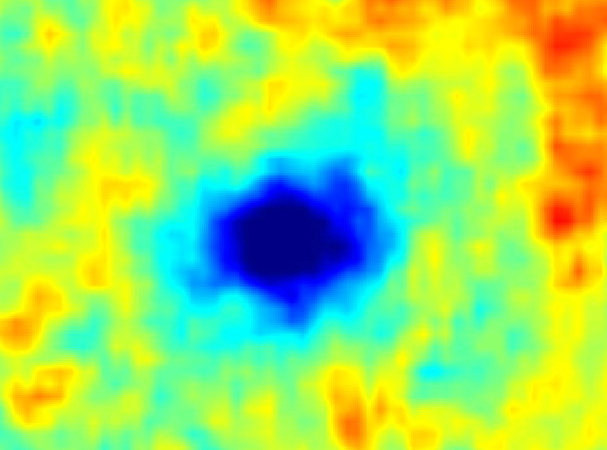|
|
SuZIE Results
In Figure 1 we show the S-Z spectra of the 11 clusters detected with SuZIE II with the best-fit thermal and kinematic spectra overlaid. An S-Z like spectrum is present in all clusters. |
Peculiar Velocities
In Figure 2 we show the precision to the radial component of each cluster’s peculiar velocity, plotted against the redshift of the cluster. We include previous peculiar velocity measurements of the clusters A1689 and A2163 observed with the SuZIE I receiver by Holzapfel et al. (1997). |

Figure 1: The SZ spectrum of 11 clusters, as measured by SuZIE II. For each cluster, the solid black line is the best-fit S-Z spectrum, the dashed red line is the best-fit thermal spectrum, and the dotted blue line is the best-fit kinematic spectrum.
|

Figure 2: Measurements of each cluster’s peculiar velocity plotted against redshift. The cross-hatched region shows the range that has been probed using optical measurements of peculiar velocities.
|
SZ flux scaling relationship
Clusters formed when the universe was a few billion years old. They formed through gravitational collapse and this collapse heated the gas to temperatures where it is visible today through the SZ effect and through X-ray emission. Both the SZ flux, and the gas temperature, are related to the total mass of the cluster. This mass includes not only the visible gas and galaxies, but also dark matter. In fact approximately 90% of the cluster mass is composed of dark matter that is visible only through its gravitational effects. Measurements of the SZ flux provide a way to estimate the mass of the cluster, provided the relationship between the flux and the mass is understood. Unfortunately cluster mass is a hard quantity to measure directly. As an intermediate step, we investigated the relationship between SZ flux and gas temperature (measured using X-ray emission). If we understand the relationship between these quantities, this is a good indication that we understand the relationship to the mass. As shown below we found a strong correlation between the two. The slope of the relationship is consistent with the so-called "self-similar" model for cluster formation.
|

|
References
- Battistelli, et al., 2002, ApJ, 580, L101.
- Benson, B.A., et al., 2003, ApJ, 592, 674.
- Holzapfel, W.L., et al., 1997, ApJ, 480, 449.
- Majerowicz, S., et al., 2002, AA, 394, 77.
- Rephaeli, Y., 1980, ApJ, 445, 33.
- Reese, E.D., et al., 2002, ApJ, 2002, 581, 53.
|
|

